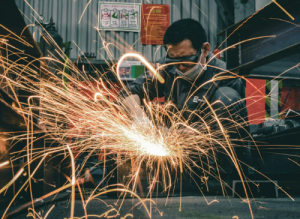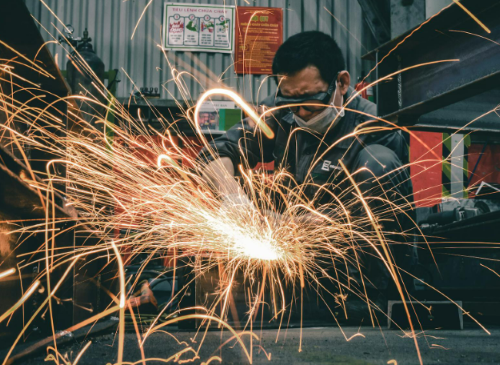Introduction
Refractory metals are characterized by their exceptional heat resistance and are commonly used in high-temperature environments. These metals include tungsten, molybdenum, tantalum, niobium, rhenium, zirconium, and hafnium. The properties that contribute to their heat resistance include melting point, thermal conductivity, and coefficient of thermal expansion. This article explores the heat resistance of these metals, highlighting the factors that affect their performance in high-temperature applications.

Factors Affecting Heat Resistance of Metals
- Melting Point: The melting point is a critical factor in determining the suitability of a metal for high-temperature applications. Metals with higher melting points can withstand greater temperatures without losing their structural integrity.
- Thermal Conductivity: Thermal conductivity measures a metal’s ability to conduct heat. Higher thermal conductivity allows for more efficient heat dissipation, which is essential in preventing overheating and potential failure of the material.
- Coefficient of Thermal Expansion: This coefficient indicates how much a metal expands when heated. A lower coefficient of thermal expansion is preferable in high-temperature environments, as it reduces the risk of thermal stress and deformation.
Related reading: Refractory Metal Tubing: Types And Applications
Heat Resistance of Refractory Metals
1. Tungsten (W):
– Melting Point: 3422°C
– Thermal Conductivity: 173 W/m·K
– Coefficient of Thermal Expansion: 4.5 x 10^-6 /°C
– Applications: Due to its high melting point and excellent thermal conductivity, tungsten is used in applications such as the manufacturing of filaments for incandescent light bulbs, electrodes for arc welding, and components in high-temperature furnaces and rocket engines.
2. Molybdenum (Mo):
– Melting Point: 2623°C
– Thermal Conductivity: 138 W/m·K
– Coefficient of Thermal Expansion: 4.8 x 10^-6 /°C
– Applications: Molybdenum is commonly used in the aerospace industry for components that must withstand high temperatures and in the production of steel alloys to improve hardness and strength. It’s also used in electrical contacts and industrial motors.
3. Tantalum (Ta):
– Melting Point: 3017°C
– Thermal Conductivity: 57 W/m·K
– Coefficient of Thermal Expansion: 6.5 x 10^-6 /°C
– Applications: Tantalum’s high melting point and corrosion resistance make it ideal for use in the chemical industry for equipment exposed to corrosive environments. It is also used in the electronics industry for capacitors and high-power resistors.
4. Niobium (Nb):
– Melting Point: 2477°C
– Thermal Conductivity: 54 W/m·K
– Coefficient of Thermal Expansion: 7.3 x 10^-6 /°C
– Applications: Niobium is used in the aerospace industry for rocket nozzles and in the production of superconducting materials for applications in MRI machines and particle accelerators. It is also used in nuclear reactors due to its low neutron absorption cross-section.
5. Rhenium (Re):
– Melting Point: 3186°C
– Thermal Conductivity: 48 W/m·K
– Coefficient of Thermal Expansion: 6.2 x 10^-6 /°C
– Applications: Rhenium is valuable in the aerospace industry for high-temperature turbine engines and rocket propulsion systems due to its high melting point and excellent mechanical properties. It is also used in the production of superalloys for jet engine components.
6. Zirconium (Zr):
– Melting Point: 1855°C
– Thermal Conductivity: 22 W/m·K
– Coefficient of Thermal Expansion: 5.7 x 10^-6 /°C
– Applications: Zirconium is highly resistant to heat and corrosion, making it suitable for use in nuclear reactors as cladding for fuel rods and in chemical processing equipment. It is also used in the manufacture of surgical instruments and aerospace components.
7. Hafnium (Hf):
– Melting Point: 2233°C
– Thermal Conductivity: 23 W/m·K
– Coefficient of Thermal Expansion: 5.9 x 10^-6 /°C
– Applications: Hafnium is often used in control rods for nuclear reactors due to its ability to absorb neutrons. It is also used in high-temperature ceramics and superalloys for aerospace applications, providing robust thermal and corrosion resistance.
Related reading: Top 10 Common Refractory Metals You Can Find Now
Conclusion
Refractory metals are essential in industries that operate under extreme temperatures.
Table 1. Heat Resistance of Refractory Metals
| Metal | Melting Point (°C) | Thermal Conductivity (W/m·K) | Coefficient of Thermal Expansion (10^-6 /°C) | Applications |
| Tungsten (W) | 3422 | 173 | 4.5 | Filaments for incandescent light bulbs, arc welding electrodes, high-temperature furnace components, rocket engines |
| Molybdenum (Mo) | 2623 | 138 | 4.8 | Aerospace components, steel alloys, electrical contacts, industrial motors |
| Tantalum (Ta) | 3017 | 57 | 6.5 | Chemical industry equipment, electronics capacitors, high-power resistors |
| Niobium (Nb) | 2477 | 54 | 7.3 | Rocket nozzles, superconducting materials for MRI machines and particle accelerators, nuclear reactors |
| Rhenium (Re) | 3186 | 48 | 6.2 | High-temperature turbine engines, rocket propulsion systems, superalloys for jet engine components |
| Zirconium (Zr) | 1855 | 22 | 5.7 | Nuclear reactor cladding, chemical processing equipment, surgical instruments, aerospace components |
| Hafnium (Hf) | 2233 | 23 | 5.9 | Nuclear reactor control rods, high-temperature ceramics, aerospace superalloys |
Tungsten stands out with the highest melting point, making it indispensable for the most demanding applications. Molybdenum and tantalum offer a balance of high melting points and thermal conductivities, suitable for various industrial uses. Niobium and rhenium are crucial in aerospace and nuclear applications due to their heat resistance and structural properties. Zirconium and hafnium, while having lower melting points compared to other refractory metals, provide excellent corrosion resistance and stability in nuclear and chemical environments.
For more details, please check Advanced Refractory Metals (ARM).
